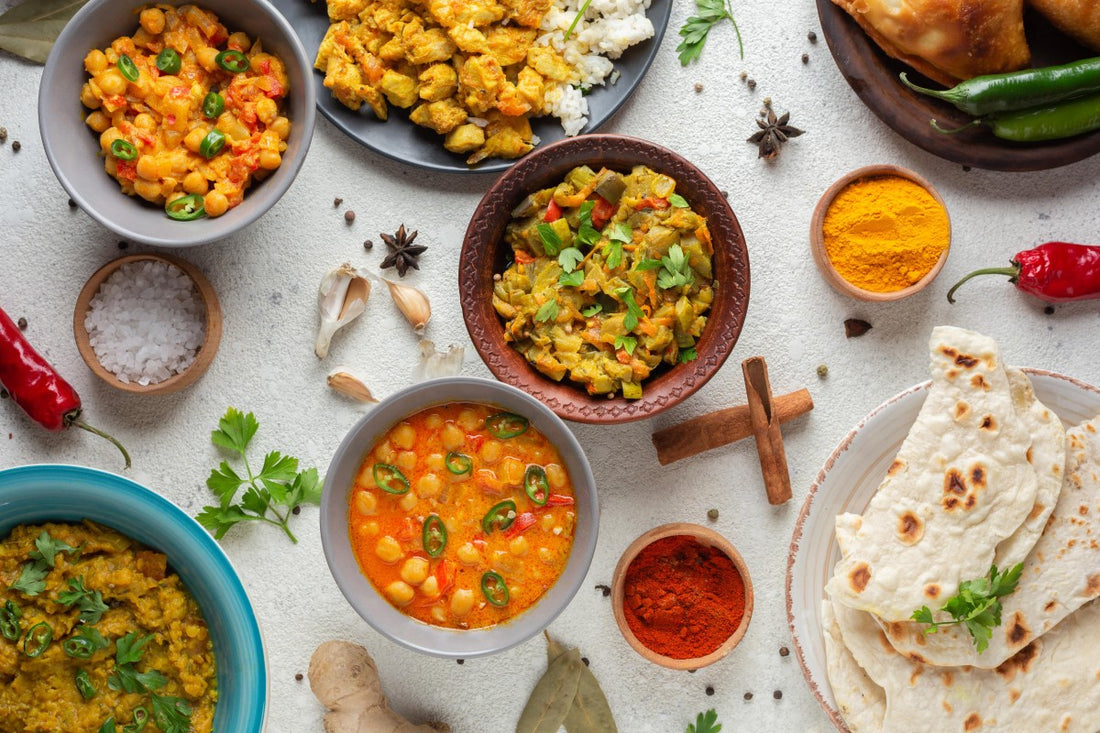Indian kitchens are a powerhouse of culinary options and a lot of them are nutrition-filled. However, dietary fiber is nutrition that often goes overlooked but is necessary for a healthy gut and digestive system. In addition, fiber-rich Indian food can not only help lower cholesterol and the risk of heart disease but also lower the risk of other illnesses such as colon cancer.
Benefits of fiber
- Reducing cholesterol
- Promoting a healthy weight
- Preventing constipation
- Managing blood sugar
- Reducing cancer risk
- Lower high blood pressure
- Normalizes bowel movements
- Lowers cholesterol levels
- Lower the risks of Heart Disease
- Strong Bones
It also prolongs feelings of fullness and prevents blood sugar spikes, which helps in weight loss. Here’s a list of the top 10 high-fiber foods in India that you can easily add to the daily Indian diet:
Top 10 High-Fiber Foods in India
Lentils
One excellent source of fiber is legumes. They are packed with protein, contain little fat, and lots of fiber. These healthful edible seeds are available in a variety, each with a unique flavour. They are common in many different types of Indian cooking and are excellent for digestive health.
Split Pea
They are low in calories and fat, rich in Vitamin B, several minerals, and a good source of soluble fiber. They also supply you with energy because they are complex carbohydrates.
Black Beans
Beans are high in fiber in general and black beans are among the highest- fiber beans. They're a nutritious option for vegetarians due to their high protein, potassium, and antioxidant content.
Kidney Beans
Kidney beans contain insoluble fibers called alpha-galactosides, which in certain individuals might result in flatulence and diarrhea. They also have high concentrations of resistant starch, which could help with weight loss. They are popular in Indian kitchens and prepared as a curry. You can also add boiled kidney beans to a hearty salad for protein.
Almonds
Almonds are abundant in good fats, unsaturated fat, and fiber which lowers your chance of developing heart disease. They include roughly 6 grams of protein per serving in addition to a substantial amount of fiber, making them an excellent on-the-go snack.
Quinoa
This superfood resembles grains but is gluten-free, full of protein, and makes a great meat alternative. Quinoa has a lot of fiber and several vitamins and minerals. Consuming quinoa regularly will help you meet your daily requirements of iron, fiber, magnesium, and potassium. It has a lot of iron, which is good for the brain, and vitamin B2, which is good for the brain and muscles.
Apples
You've probably heard the saying "an apple a day, keeps the doctor away" and considering the health benefits of this beloved fruit, it's kind of true. Pectin, a type of soluble fiber associated with lowered cholesterol, can be found in apples which is an essential nutrient that helps maintain digestive health and aids bowel movements.
Brussel Sprouts
This cruciferous vegetable is high in antioxidants like vitamins C and K and a rich source of fiber.
Instead of boiling this tasty vegetable, try roasting, sautéing, or shredding raw Brussels for a delectable salad.
Barley
Barley is a tasty grain that is often overlooked. It has a nutty flavour and is slightly chewy. It is a complete grain that is rich in vital vitamins and minerals. Additionally, it is quite filling, which may help you in avoiding overindulging. To add this to your diet, try barley-based soups with chicken, mushroom, and parmesan or hearty barley soup with kale. You can also combine barley with your preferred meat and vegetables to make a grain bowl. It's a hearty, satisfying risotto as well.
Chia Seeds
A tiny amount of chia seeds can make a big difference. They pack a nice protein punch, are incredibly rich in fiber, and contain omega-3 fatty acids.
Chia seeds give oatmeal, pudding, jam, salads, and even guacamole texture and are full of health benefits. If you are not a fan of their jelly-like texture, include them in a smoothie or yogurt just before eating. This prevents them from having as much time to plump up from absorbing water, which gives them their gloopiness.
Word Of Advice
Before you begin to add more fiber to your diet, it is important to note that you must add more fiber to your diet but slowly. Eating too much might create cramps and bloating if your body isn't acclimated to it. Over a few weeks, progressively increase the amount of high-fiber meals you eat to prevent feeling bloated. Your body will function better if you gradually increase your fiber intake and make sure to stay hydrated.
A proper fiber rich diet is intimately tied to your gut and overall health, so try this out Metabolic Fiber Boost a Prebiotic Fibers for the Gut.
Conclusion
Dietary fiber effectively contributes to the body's regular functioning. By incorporating high-fiber Indian cuisine into your diet, you can help with blood sugar regulation, constipation prevention, and improved digestion and overall gut health. However, the amount of soluble and insoluble fiber consumed needs to be properly balanced. The health of the gut depends on both. Consume more fruits, vegetables, grains, nuts, and other foods high in fiber to help your digestive system.
Reference:
- https://health.clevelandclinic.org/high-fiber-foods
- https://www.researchgate.net/publication/313226719_Indian_food_Composition_Tables


